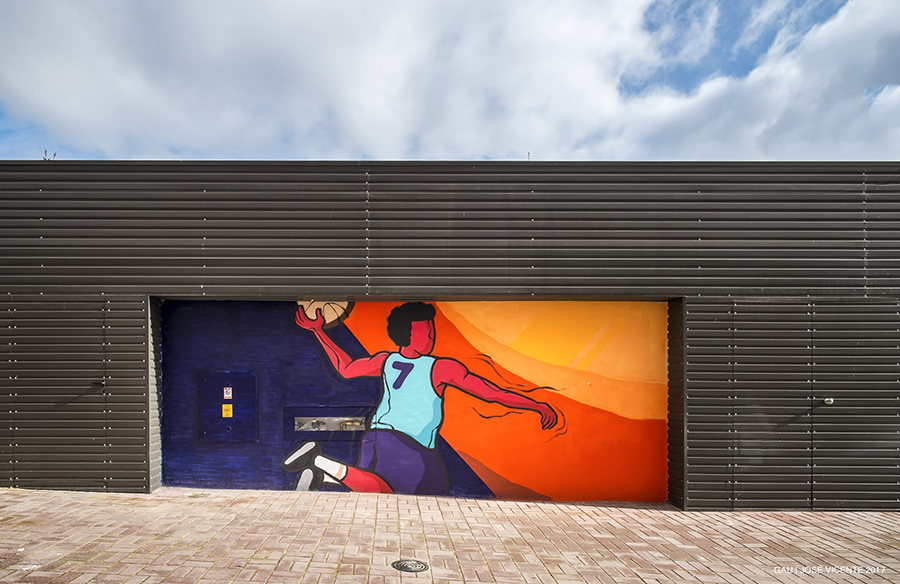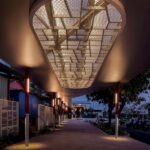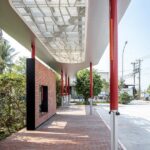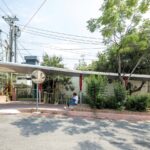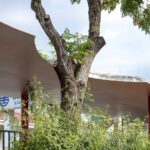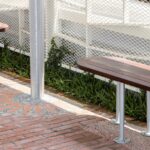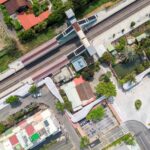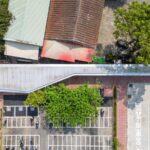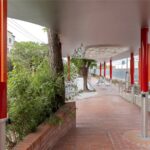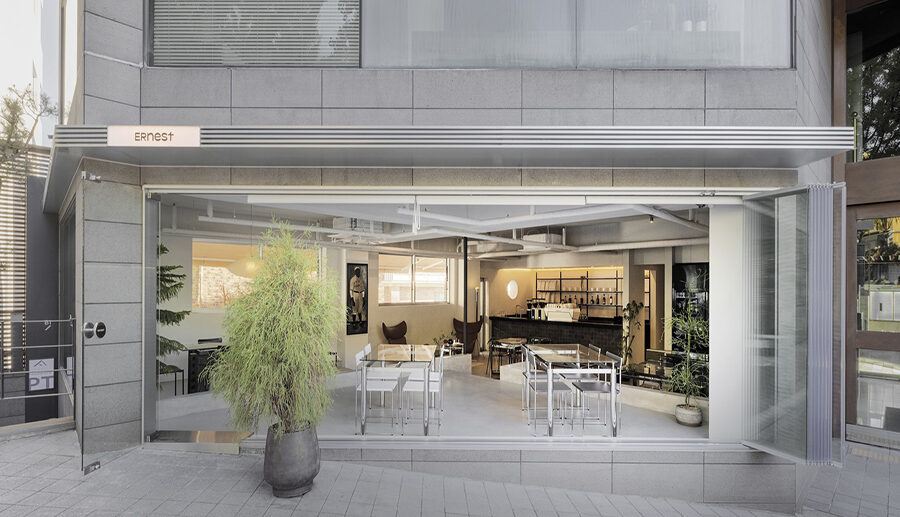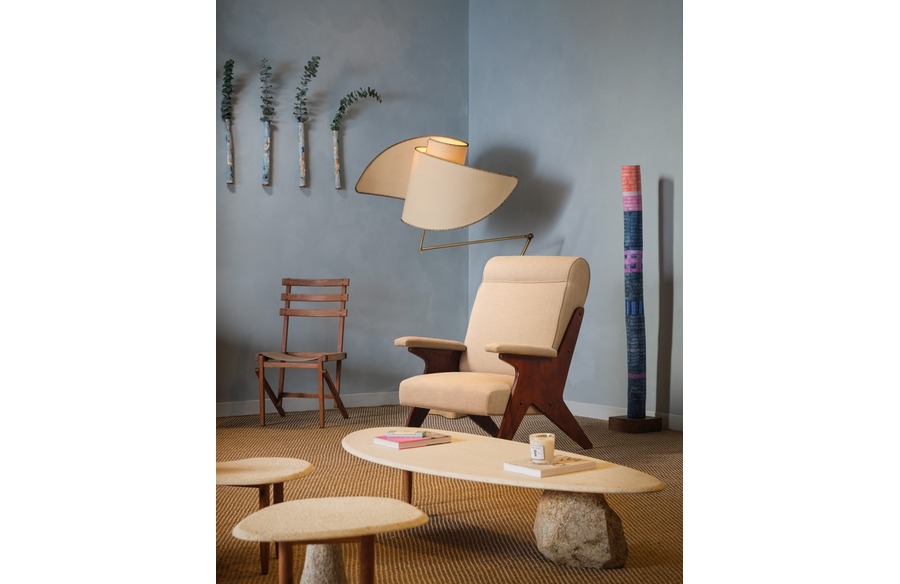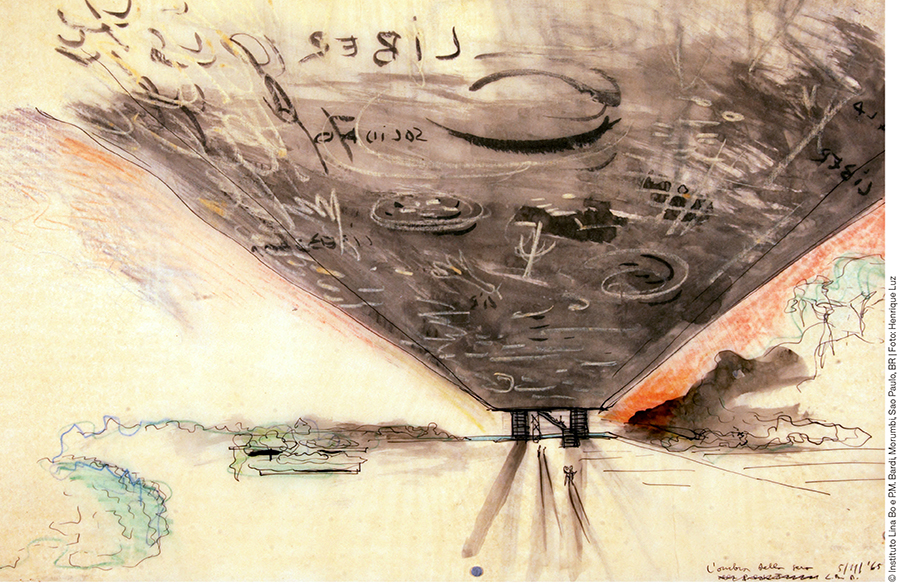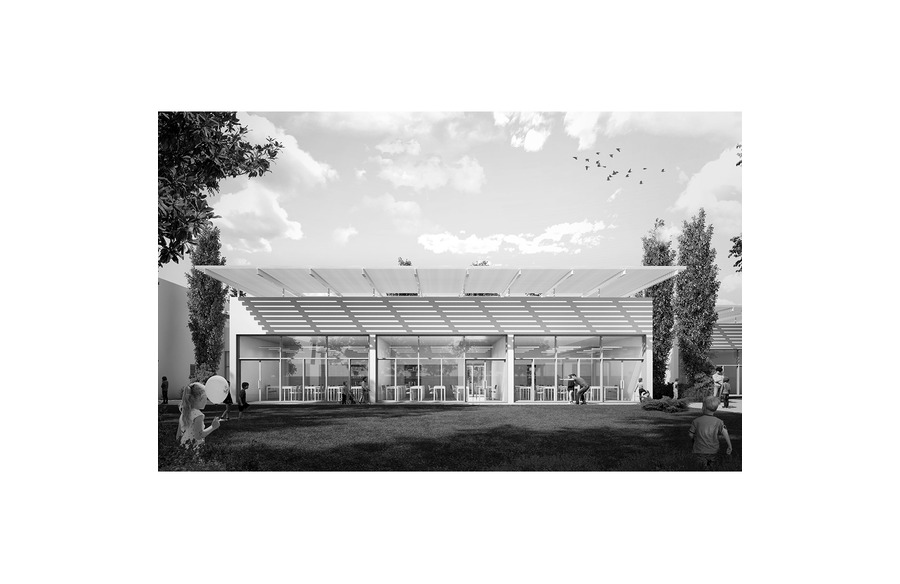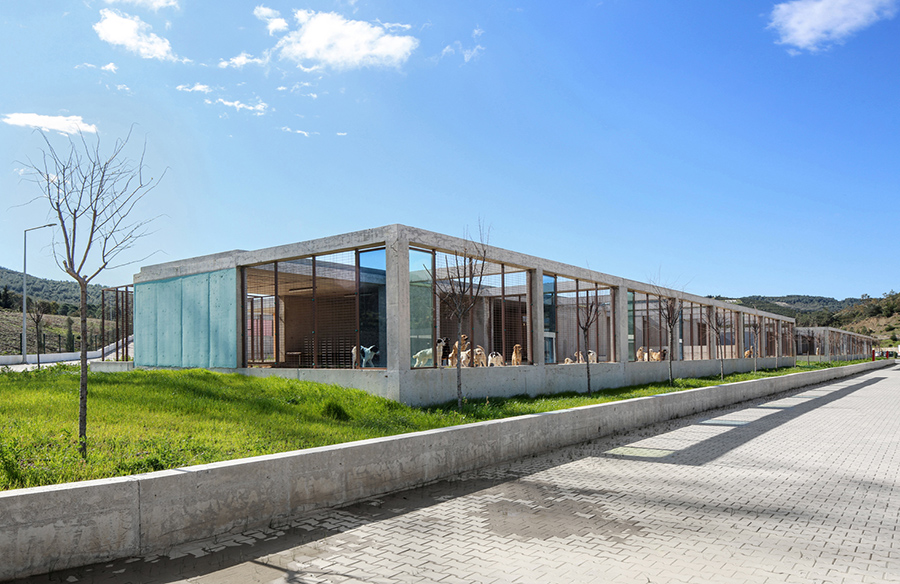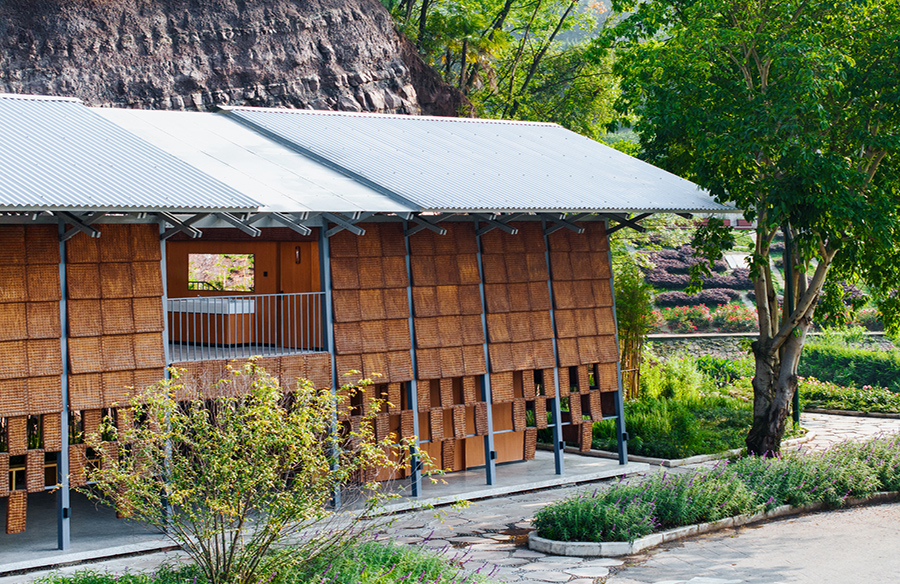Revitalizing Spaces: Pointe Pavilion in Tainan, Taiwan

A Multifunctional Oasis: Pointe Pavilion
Situated in front of the Taiwan Railway Liuying Station, the Pointe Pavilion by J.R Architects stands as a testament to innovative public architecture. Designed by lead architect Huang Cho-Jen, this installation transforms the urban landscape into an integrated sidewalk system, seamlessly combining functionality with aesthetic appeal.
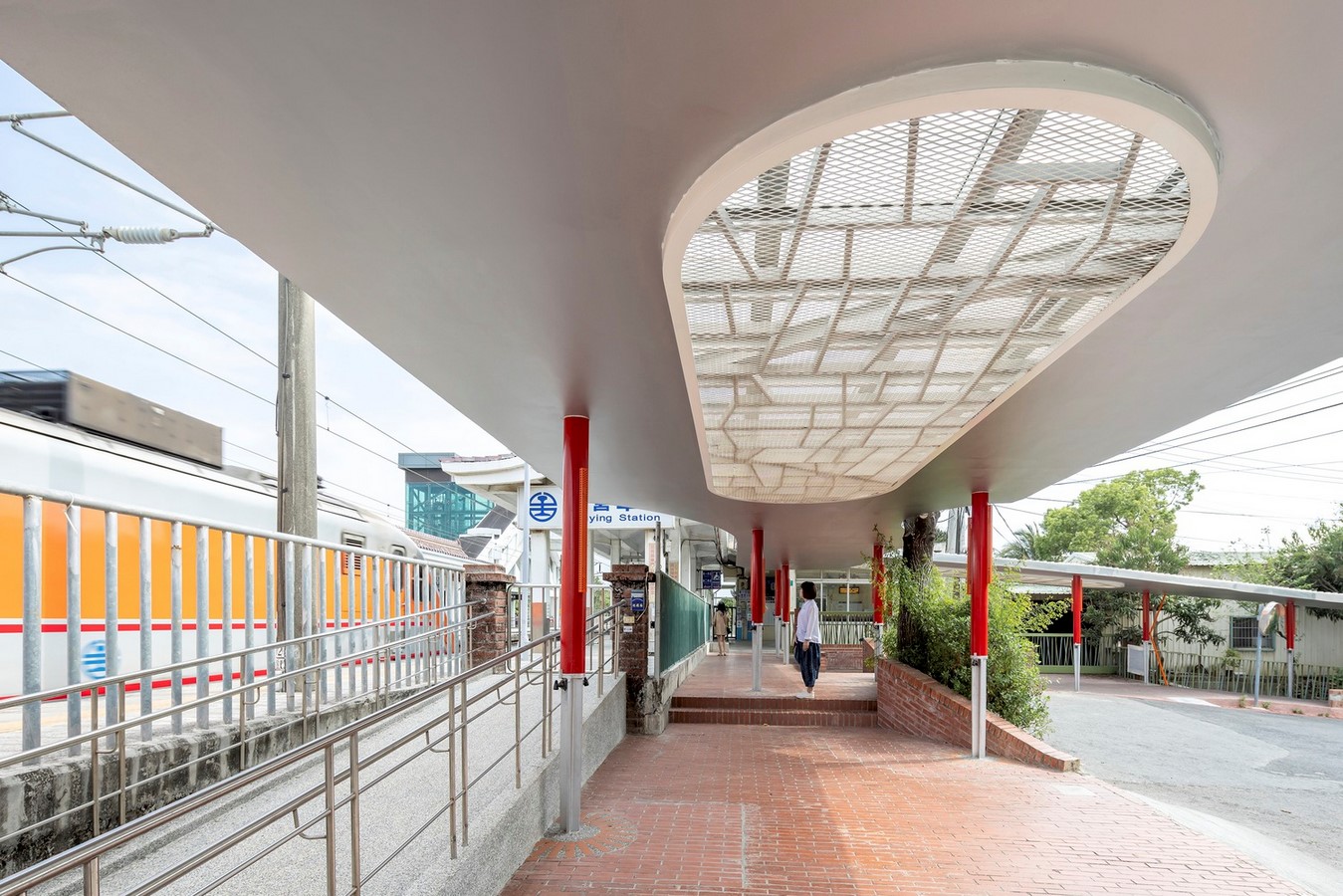
Inspired Design: The Dragonfly Wings
Drawing inspiration from the dragonflies commonly found in local fields, the Pointe Pavilion’s structural frame mirrors the elegance of “dragonfly wings.” This organic public art not only navigates existing tree branches, preserving communal spaces under the trees, but also gracefully maneuvers around underground agricultural irrigation systems. The result is a balletic arrangement of cross-shaped columns that dance around these systems.
Functionality Meets Aesthetics
The pavilion serves multiple purposes, functioning as a weather-protected corridor, a neighborhood resting spot, and a bus station. The incorporation of a lighting system into the structure itself transforms fixtures into integral design elements. The floor tile arrangement, along with night-time uplighting, mimics the gentle touch of a dragonfly on the water’s surface, creating a harmonious and visually appealing atmosphere.
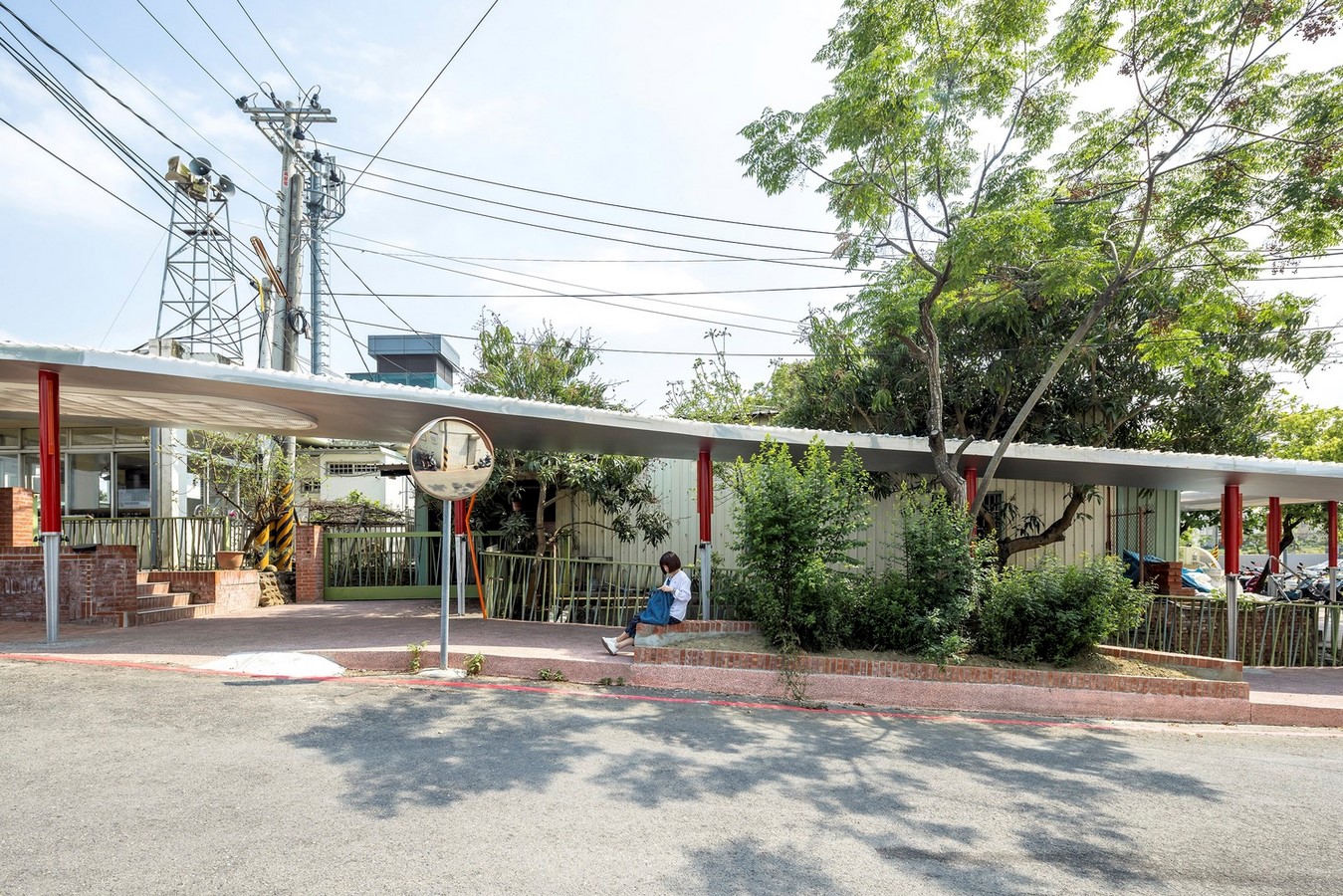
Reflective Elegance: Silver Plate Aesthetics
The silver plate’s reflectivity adds a contrasting element to the surroundings, prompting visitors to rediscover the local cultural roots. This design choice encourages an appreciation of the subtle colors of neighboring houses, the vibrant hues of plants, and the dynamic interplay of light and shadow when a train passes by. The elliptical translucent dragonfly wings, softly patterned at the nodes, allow natural skylight to filter through, contributing to the overall aesthetic.
Reviving Local Identity
Pointe Pavilion, with its site-specific furniture and thoughtful design elements, aspires to reignite a sense of place in the neighborhood. By creating an inviting space that intertwines nature, culture, and community, the pavilion becomes more than a structure—it becomes a revitalized focal point that fosters local connections and rekindles the essence of the neighborhood.


